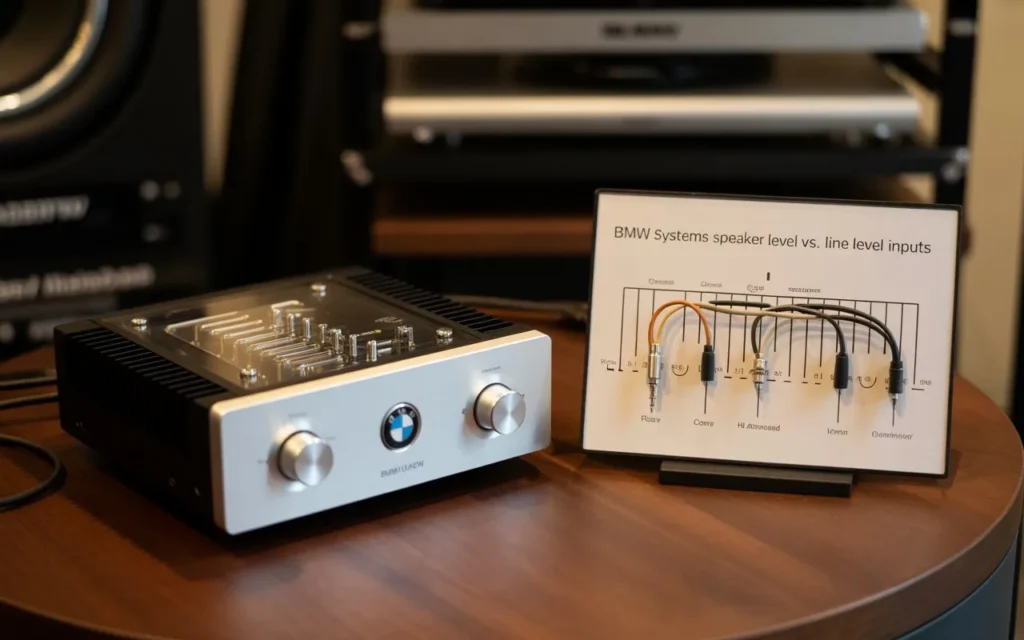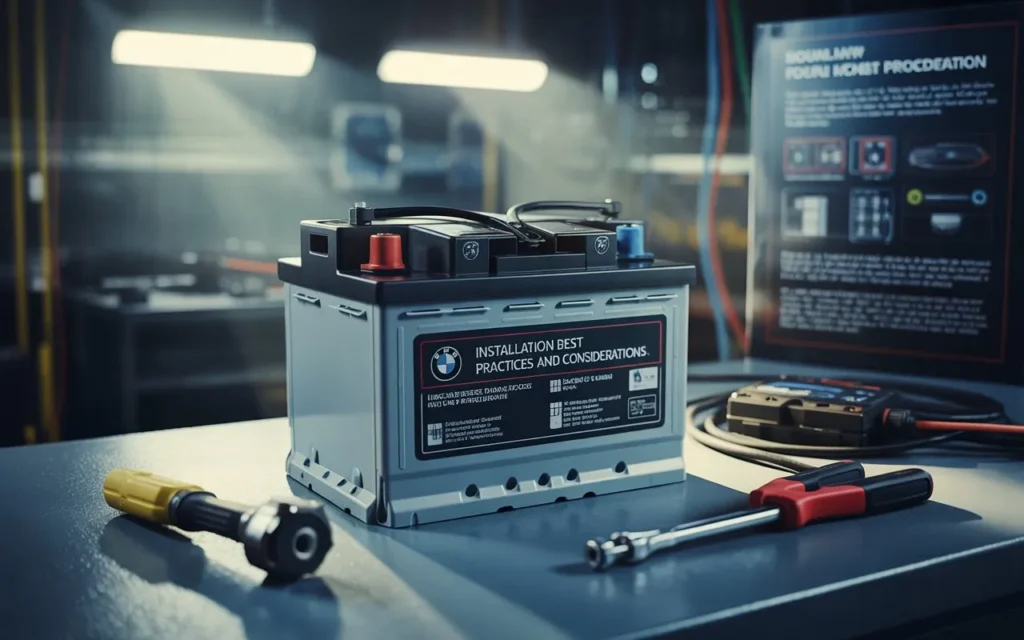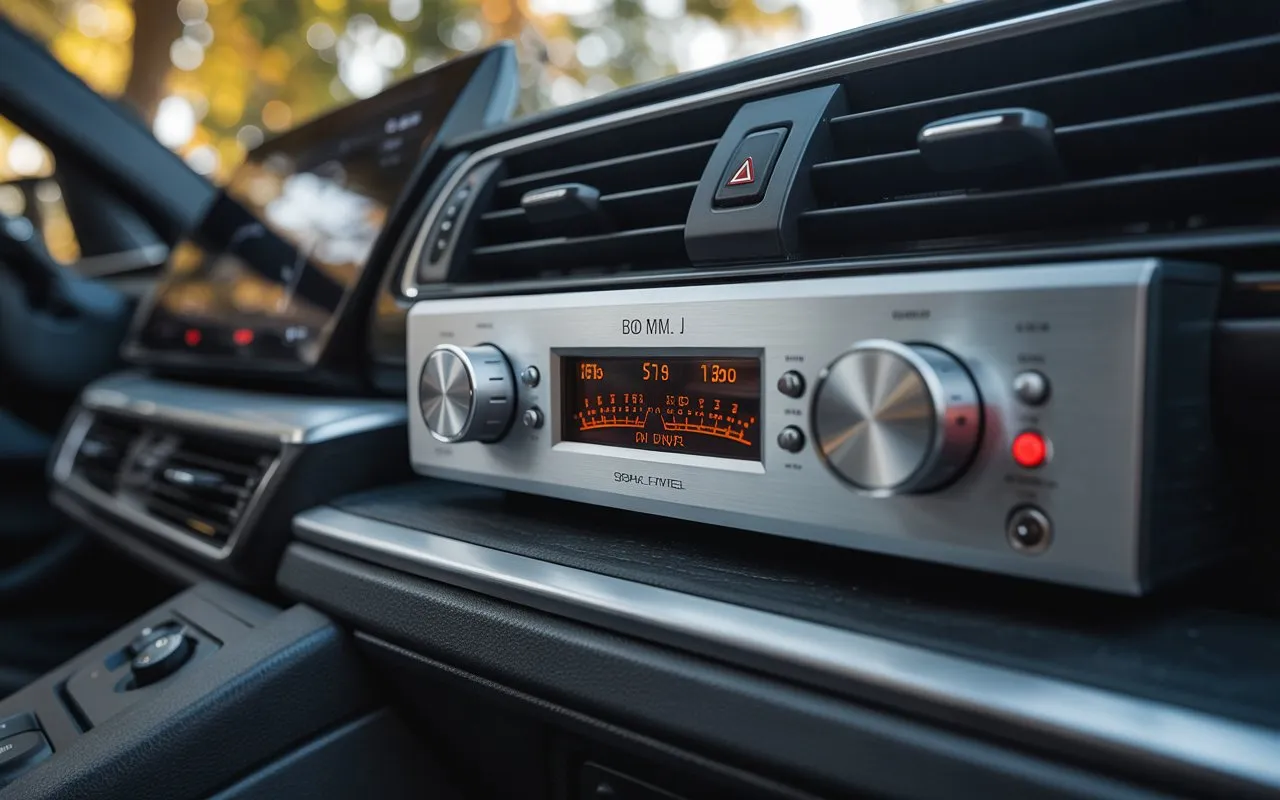BMW Hi-Fi amplifiers are a part of the audio systems installed in most BMW cars, which are meant to provide high quality sound. These amplifiers improve the overall audio experience by boosting the strength of the sound signal, which leads to a clearer and more dynamic sound reproduction. In comparison with the regular audio systems, which can offer only a limited sound clarity, BMW Hi-Fi amplifiers create a more complete, immersive acoustic experience, enabling drivers and passengers to enjoy the nuances of their favorite music.
The usefulness of a Hi-Fi amplifier is that it amplifies audio signals so that all the components of a song, including treble and bass, are heard clearly. This amplification is vital, particularly when working in an environment that can cause noise interference, like within a moving vehicle. These amplifiers allow higher sound levels to be reproduced without distortion by amplifying the amplitude of the audio signals of the source, thereby maintaining the integrity of the original recording.
There is a widespread misunderstanding about the input levels that BMW Hi-Fi amplifiers can be used with. Other users may believe that all Hi-Fi amplifiers are speaker level input, which may cause confusion when adding aftermarket audio components. It is important to know the actual specifications of these amplifiers in case one wants to improve or upgrade the audio system of his or her vehicle. It is necessary to explain what kind of inputs these amplifiers take, which may differ greatly between models. This section forms the basis of an in-depth discussion on whether BMW Hi-Fi amplifiers actually support speaker level inputs, dispelling assumptions and shedding light on this critical subject.
Amplifier Input Levels
Input levels are important in audio systems because they define the transmission and amplification of sound signals. There are two major categories of input levels namely speaker level and line level inputs. These differences are critical to know in order to achieve maximum performance during installation or upgrade of audio equipment.
High-level inputs, also known as speaker level inputs, are intended to accept speaker level signals. These inputs receive the amplified audio signals produced by an amplifier and convert them to a usable form to be used by other components in the system. An example of a typical application of speaker level inputs is in the case of an aftermarket amplifier being used with a factory car audio system. This form of input is beneficial when an external amplifier must be connected and no additional wiring to the head unit is required to carry low-level signals.
Line level inputs, or low-level inputs, on the other hand, are fed by preamplifiers or other lower voltage sources, e.g. CD players, smartphones, or digital music players. These signals are normally between 0.5 and 2 volts, which is less powerful than speaker level signals. High-fidelity audio applications require line level inputs where audio quality is a concern. They tend to provide a clearer, more detailed sound, which is particularly pertinent to contemporary audio systems which take advantage of digital sources.
In determining the compatibility of an amplifier, it is important to note the type of input that it accepts, speaker level or line level. The type of input also influences the functionality and the general sound quality of the system. Systems that are built to operate on certain types of input might not operate well when mismatched. Thus, being aware of these differences can assist the user in making informed choices to avoid possible problems with audio quality and system integration.

BMW Systems Speaker Level vs. Line Level Inputs
In BMW audio systems, it is important to know the kind of inputs that Hi-Fi amplifiers use whether in factory or aftermarket modifications. Speaker level inputs and line level inputs are two different methods of connecting audio sources and have their own pros and cons. High-level inputs, also called speaker level inputs, are intended to receive signals directly at the factory head unit or speakers of the vehicle. This enables a smooth integration with the current system without making major changes. Conversely, line level inputs are fed with signals by a source like a headphone jack, which are usually lower voltage signals.
The Hi-Fi amplifiers of BMW mainly use speaker level inputs. This design decision is important since it allows direct connection to the factory wiring harness, making it compatible with the original audio system of the vehicle. Knowledge of this type of input is important to enthusiasts who want to install aftermarket parts. Speaker level inputs may simplify the installation and maintain the audio integrity of the vehicle with the upgrade being able to improve the sound quality.
Among the implications of the use of speaker level inputs in the BMW systems is the capability to maintain the original functions of the vehicle including steering wheel controls and factory sound settings. It is however important to note that although the connection at the speaker level inputs may make the installation easier, it may also pose some difficulties in signal quality. Other aftermarket systems offer a more fidelity experience with line level connections, which may require more involved installations with more components, including signal converters.
Finally, the choice of the input type is also very important in order to obtain the desired audio performance. Although Hi-Fi amplifiers by BMW usually take advantage of the convenience and compatibility of speaker level inputs with factory systems, individuals seeking higher sound fidelity can consider alternatives that use line level inputs and the requisite adjustments to their audio systems.
Professional Opinions: What Audiophiles Say
When it comes to automotive audio systems, especially BMW cars with Hi-Fi systems, audiophiles tend to be very opinionated, depending on their experiences. John Davis, a long-time car audio installer with more than 15 years of experience, says, “The speaker level inputs on BMW Hi-Fi amplifiers are tricky. Their design and functionality are important to know in order to get the best out of sound.” His observations stress the need to understand the configuration of the audio system prior to making changes.
Likewise, Sarah Mitchell, a car audio enthusiast who has customized several BMWs, notes, “When I initially upgraded my Hi-Fi system, I had not realized the effects of the amplifier inputs. The sound quality and clarity became very good after I adjusted the speaker level inputs.” This is what many users can say about their first attempts to understand the full potential of the audio settings and controls of BMW.
Further, professional audiophile and reviewer, David Clarke, provides a technical insight, saying, “Although most people think that all car audio amplifiers are designed to only accept line-level inputs, BMW has designed it with special features to integrate speaker level inputs. This implies that with a cautious matching to the existing speaker outputs, sound reproduction can be impressive.” His focus on matching equipment is an indication of the subtlety required to get high fidelity sound in BMW cars.
Lastly, the comprehensive review by audio blogger Lisa Han mentions the significance of installation methods. She comments, “A new amplifier does not simply involve plugging in the speaker level inputs, but rather an appreciation of the acoustic environment of the vehicle and the particular characteristics of the amplifier.” This observation highlights the difficulty of attaining the best performance in the Hi-Fi system of BMW.

Installation Best Practices and Considerations
When installing or upgrading a BMW audio system, especially in regards to the integration of a hi-fi amplifier, there are a number of factors that should be taken into consideration to guarantee the best performance and compatibility. The initial step is to choose the appropriate equipment that will fit the needs of your vehicle, as BMW vehicles tend to use special audio parts. This requires the selection of an amplifier capable of accepting speaker-level signals, so that the signal can be transferred effectively out of the factory system.
It is important to have the tools and components before starting the installation. A wiring harness that is specifically made to fit BMW models can make the connection process efficient and reliable. It is important to get acquainted with the current wiring diagram of the car; by opening the factory amplifier, it is possible to determine which wires need to be connected to the new hi-fi amplifier. A wire diagram may be of great assistance during this step, and it will assist users to splice or connect their amplifier inputs to the respective speaker levels.
When connecting the amplifier, all cables should be firmly connected and insulated to avoid short circuits. You should use good quality RCA cables when your amplifier has line-level inputs, but this section is concerned with speaker-level compatibility. Furthermore, high quality connectors will assist in ensuring a good connection and reduce signal noise which will greatly improve the overall sound quality of your audio system.
Typical installation errors are failure to connect to the ground or failure to match the power requirements of the amplifier with the speaker specifications. It is important to make sure that the impedance ratings match, because mismatched impedance may cause distorted sound or, in extreme cases, damage to the amplifier or the audio system of the vehicle. These practices outlined can help one to effectively upgrade his or her BMW audio system without committing the common installation mistakes.
Typical BMW Hi-Fi Amp Input Problems
Regarding the BMW Hi-Fi amplifier inputs, there are several typical problems that users tend to report and that may influence the audio performance. Signal distortion is one of the main issues that may result in a poor listening experience. This distortion can be caused by a number of factors such as low quality wiring, interference of other electronic devices, or even wrong amplifier settings. High-quality cables and secure and properly routed connections are essential to reduce distortion. Also, a clean power supply can greatly improve sound fidelity.
The other common problem that is experienced with the BMW Hi-Fi amplifier inputs is incorrect connections. Users can also connect inputs that are supposed to be used in other applications, which results in poor sound performance. One must make sure that the speaker level inputs are being utilized properly and that the amplifier is suitable to the particular model of the BMW. In such cases, it is possible to seek clarification by referring to the manual of the vehicle or a professional installer so that the system is installed properly to perform optimally.
During troubleshooting, most users will forget to check the amplifier settings. The input signal quality can be influenced by the gain levels, crossover settings and equalizer adjustments. It is important to ensure that these settings are as per the recommendations of the manufacturer to ensure audio clarity. In addition, it is also advisable that the users undertake routine checks on their sound system to detect any wear and tear that may be causing performance problems.
The audio experience in BMW models with Hi-Fi systems can be greatly improved by preventive measures. Problems can be avoided by regular maintenance, such as checking connections and cleaning components. Through proactive and responsive measures to these typical problems, users will be able to experience a rich and immersive audio experience without the interference of technical problems.
BMW Hi-Fi Amplifier Frequently Asked Questions
1. Are BMW Hi-Fi amplifier inputs speaker level?
BMW Hi-Fi amplifiers have speaker level and line level inputs, depending on the model and interior configuration. Customers are advised to consult the manual of the vehicle to get accurate specifications of the type of inputs that their model supports.
2. What are speaker level inputs?
Speaker level inputs are meant to receive signals of the already available speakers in the car. Such inputs tend to be higher voltage signals than line level inputs, which are intended to be directly connected to the output of a head unit or audio source.
3. Is it possible to connect aftermarket speakers to my BMW Hi-Fi amplifier?
Yes, it is possible to connect aftermarket speakers to BMW Hi-Fi amplifiers, as long as the amplifier is compatible with the impedance and power ratings of the new speakers. You should ensure that the selected speakers are compatible with the particular model of amplifier that is common in your car.
4. What can I do to know whether my car amplifier can be used with my audio system?
The compatibility can usually be identified by matching the specifications of the amplifier and the audio equipment. Seek information on power output, impedance and input types to have a smooth connection.
5. What will occur when I make use of the incorrect form of input?
Inputting the wrong type of input can lead to poor sound quality or in worst cases, breakage of the amplifier or speakers. Line level signals may be distorted and even overheat when used with speaker level inputs.
6. Do BMW Hi-Fi amplifiers require a line output converter?
You might need a line output converter when you are connecting an aftermarket head unit that only has line level outputs to speaker level inputs on the amplifier. This device assists in compatibility and sound quality.
Conclusion: Main Insights
When summarizing the insights presented in the course of this exploration of BMW Hi-Fi amplifiers and their input specifications, it is necessary to highlight the difference between speaker level inputs and line level inputs. The high-end sound systems of BMW usually incorporate advanced technology that requires a delicate understanding of the way these amplifiers work. It has been determined that some of the models have high-level input capabilities whereas others are mostly based on low-level inputs that are specific to a given audio configuration.
The important lesson to be learned by those enthusiasts who want to upgrade their sound systems is that BMW Hi-Fi amplifiers do not normally accept direct speaker level inputs without suitable interfacing. The knowledge of the final audio objectives and the hardware will go a long way in determining the success of the changes or improvements to the sound quality. These changes can also necessitate the use of adapters or converters to make the connection between speaker level outputs and amplifier inputs, which is in line with the nature of the audio design of the vehicle.
Moreover, although there is a great number of online discussions and resources that explain the compatibility and installation procedures, it is strongly recommended to consult a professional in case one is not familiar with the automotive audio systems. Involving professionals will not only make sure that the selected changes are possible but also help to achieve the best performance and durability of the equipment. When you decide to upgrade your BMW audio system, research and professional advice will be of great help to get the best out of it, in terms of the capabilities of your car and your audiophilic desires. Optimizing the audio experience of your BMW can significantly increase your driving comfort and pleasure.

